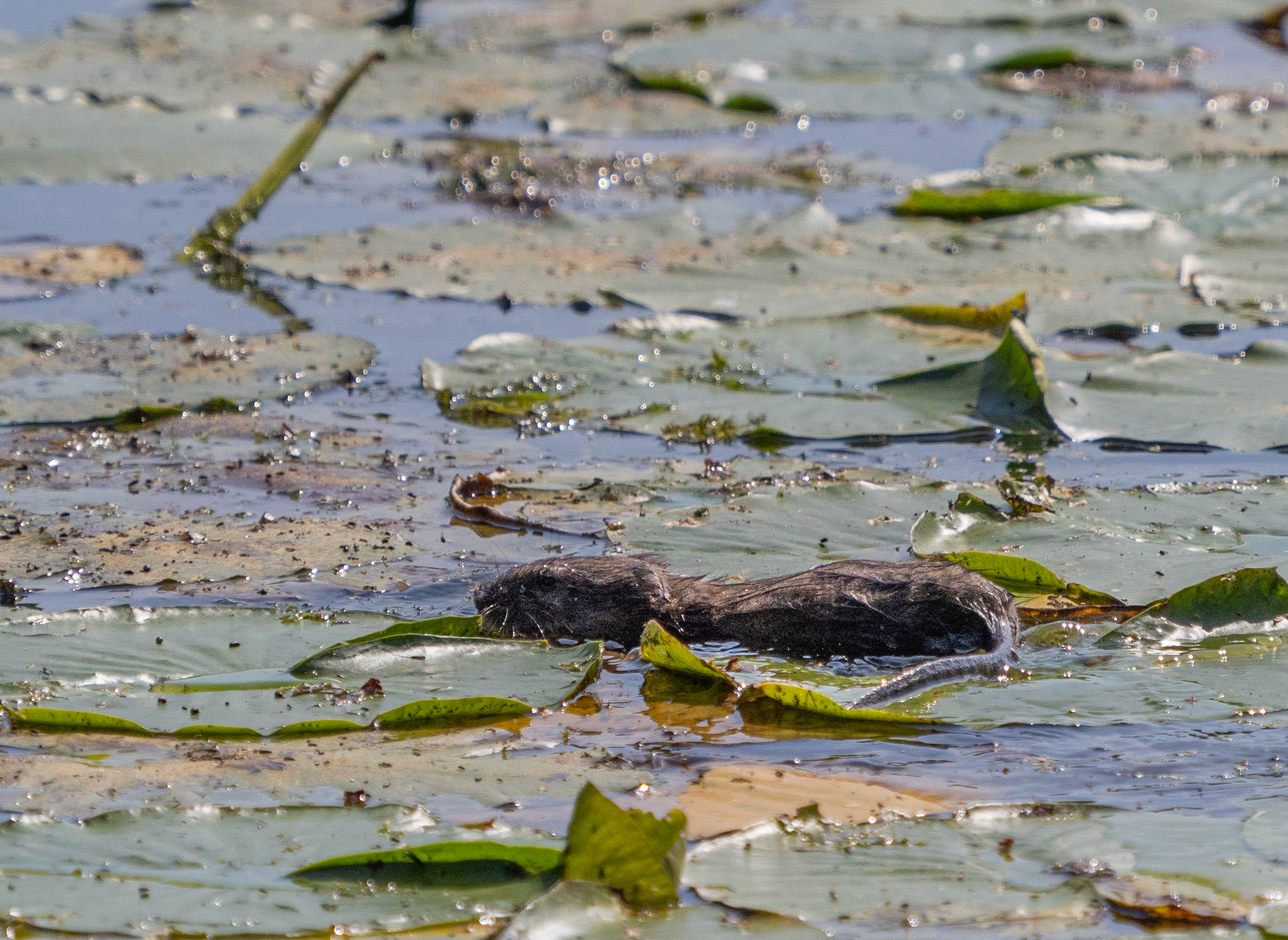The water levels were still high for the first two weeks, then seemed to lower a bit. Wood and mallard duck families re-appeared as did many male wood ducks in various stages of moult. Bull frogs were plentiful and noisy.
Snapping turtles, amongst others,, will feed on small ducklings, and in the first picture, the female seems to be looking at the snapping turtle quite intently. But before and after that, the wood duck pair were swimming about the snapper seemingly without care - obviously feeling they were safe.
While not a picture perfect line-up, young wood ducks relaxing ion a log in the second image. The third being a young female that still has a few downy feathers sticking out.
The last picture is a young male wood duck. The vertical white stripe below/behind the eye is indicative of a male.



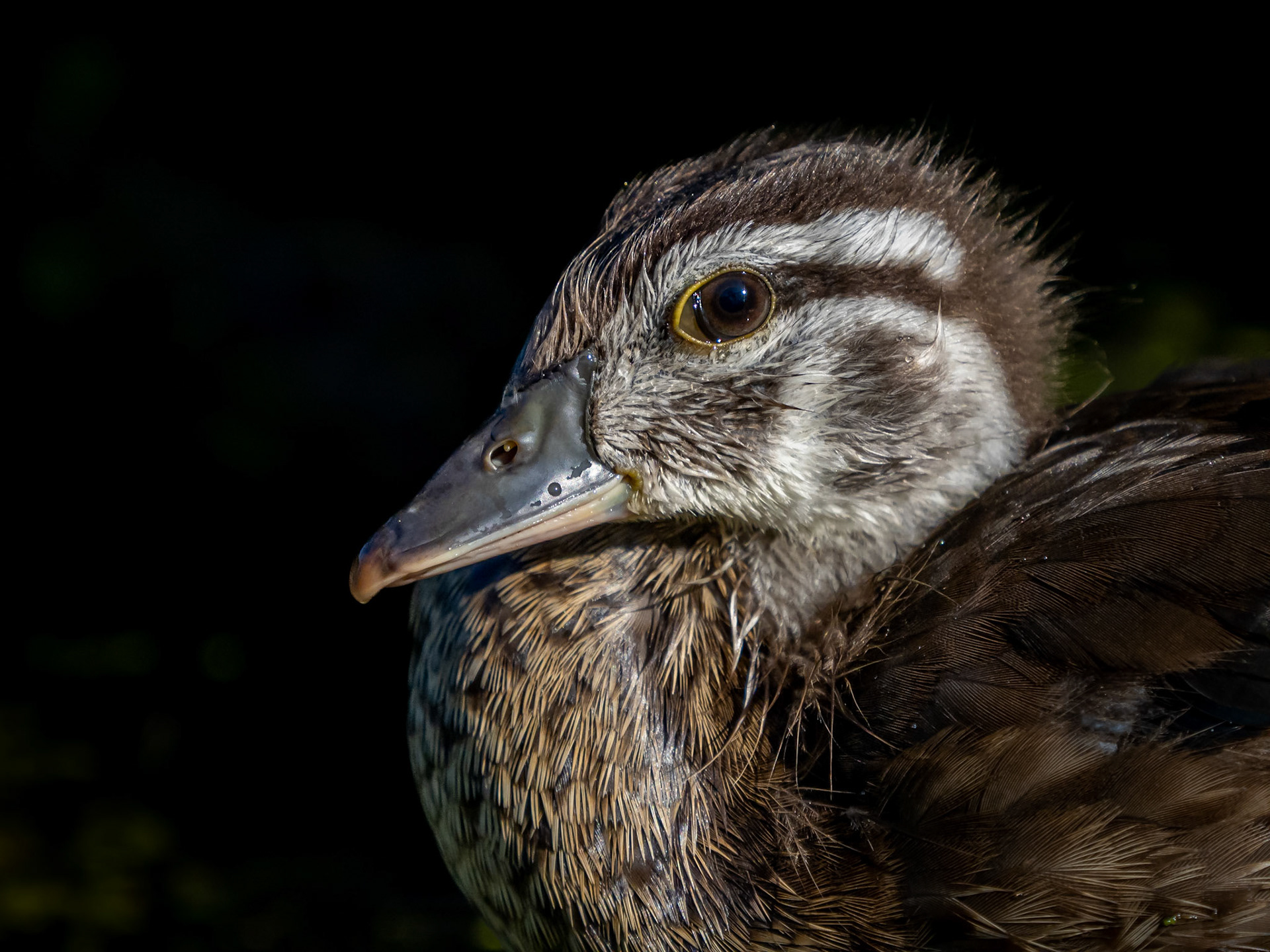
The well camouflaged leopard frogs are often more difficult to spot but these one was out in the open., two bull frogs were resting on lily pads. The last picture is an oddly coloured large bull frog. It sat there quietly while other bull frogs around sounded. Occasionally it would respond to the others.
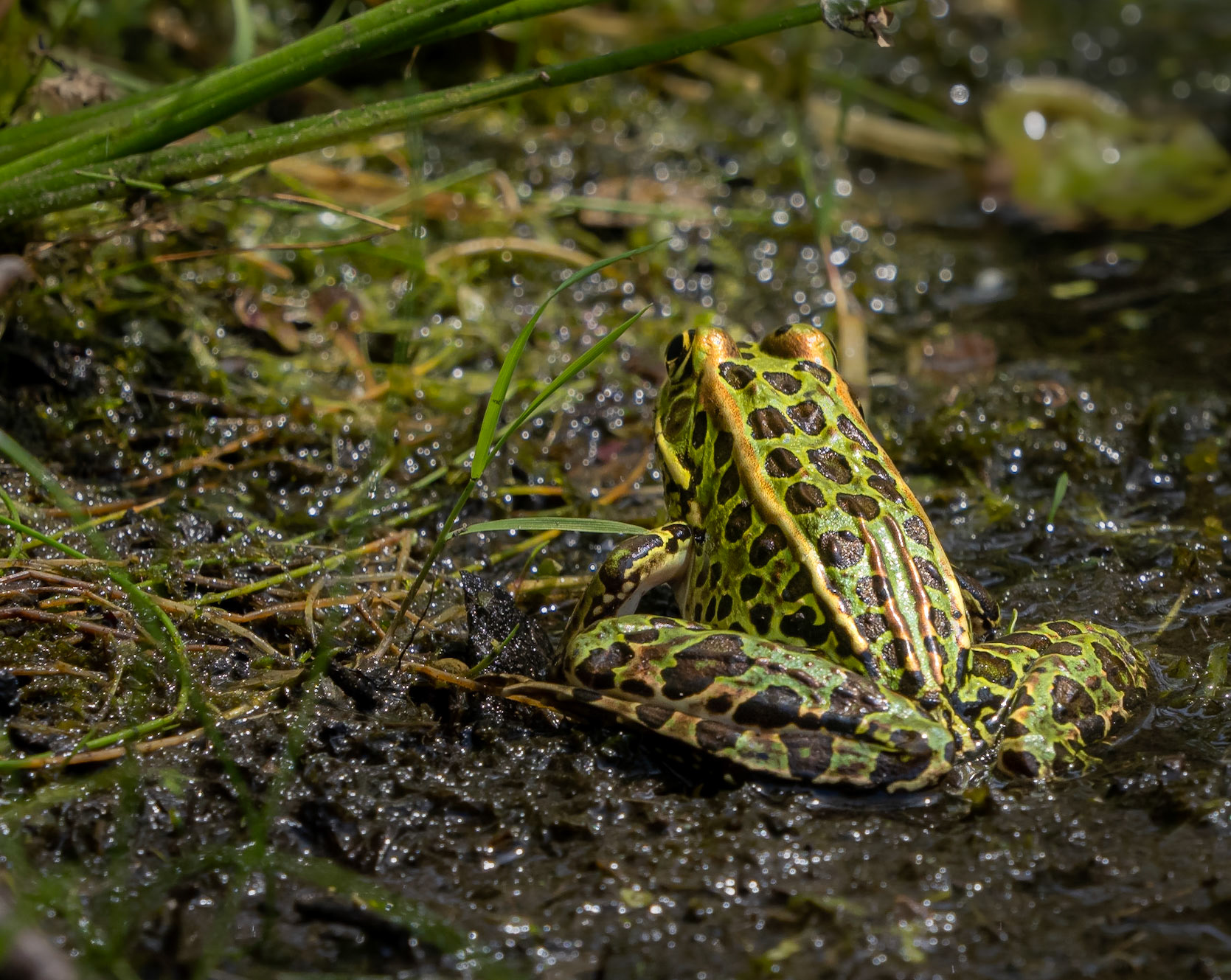
leopard frog

leopard frog
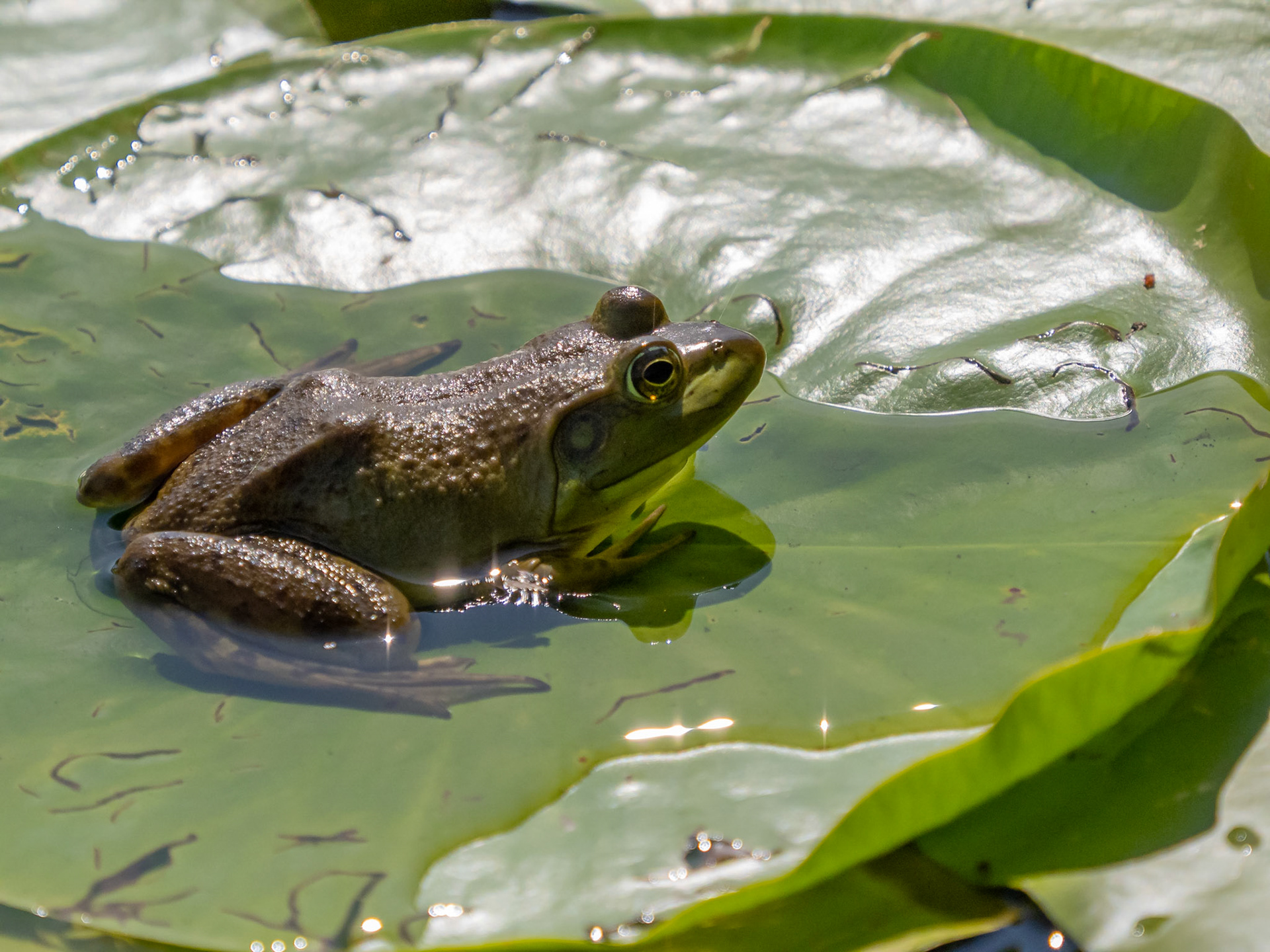
bull frog

bull frog
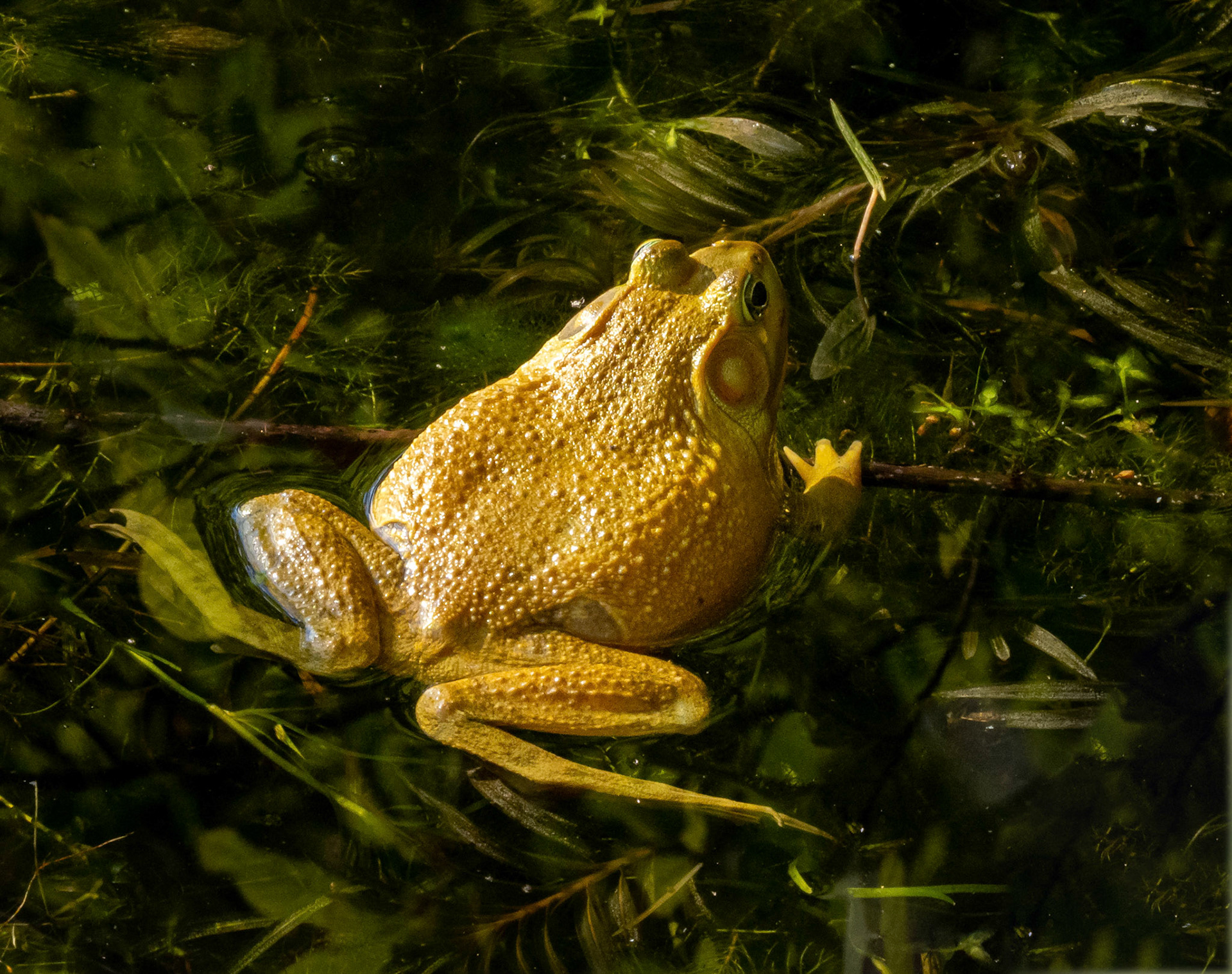
oddly coloured bull frog
While mosquitoes seem to get a head start, the dragonflies make a welcome appearance to deal with them. Dragonflies hatch from nymphs, of which we found a number down by the river. The second picture is a close up view of one of the nymphs to show how the dragonfly hatches/emerges through the back of the nymph.
The two dragonflies below are dot-tailed whitefaced dragonflies
The two dragonflies below are dot-tailed whitefaced dragonflies



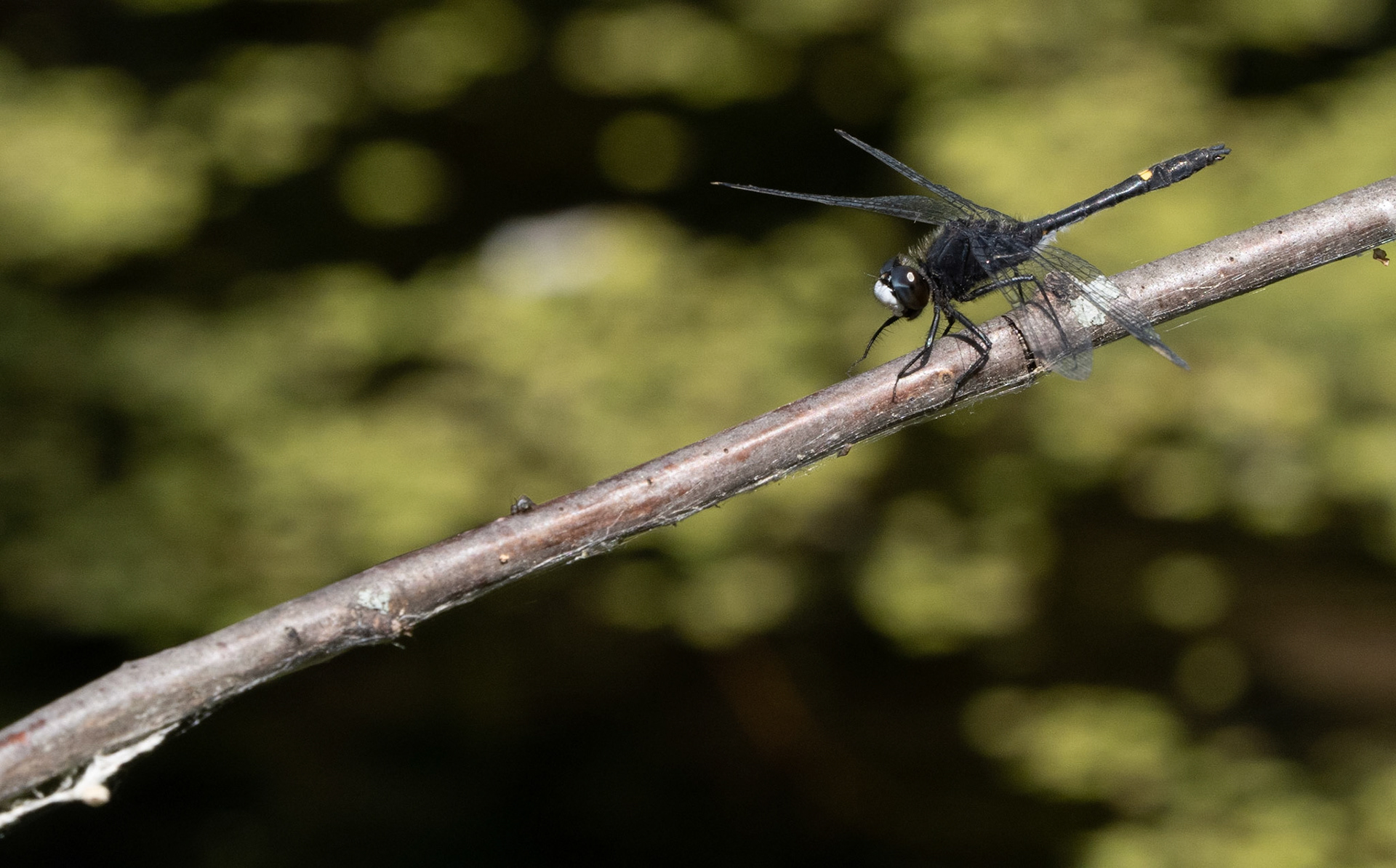
The white water lilies were in bloom as was the swamp milkweed. A cabbage white butterfly was checking out some of the many vipers blugloss flowers up on the ridge.
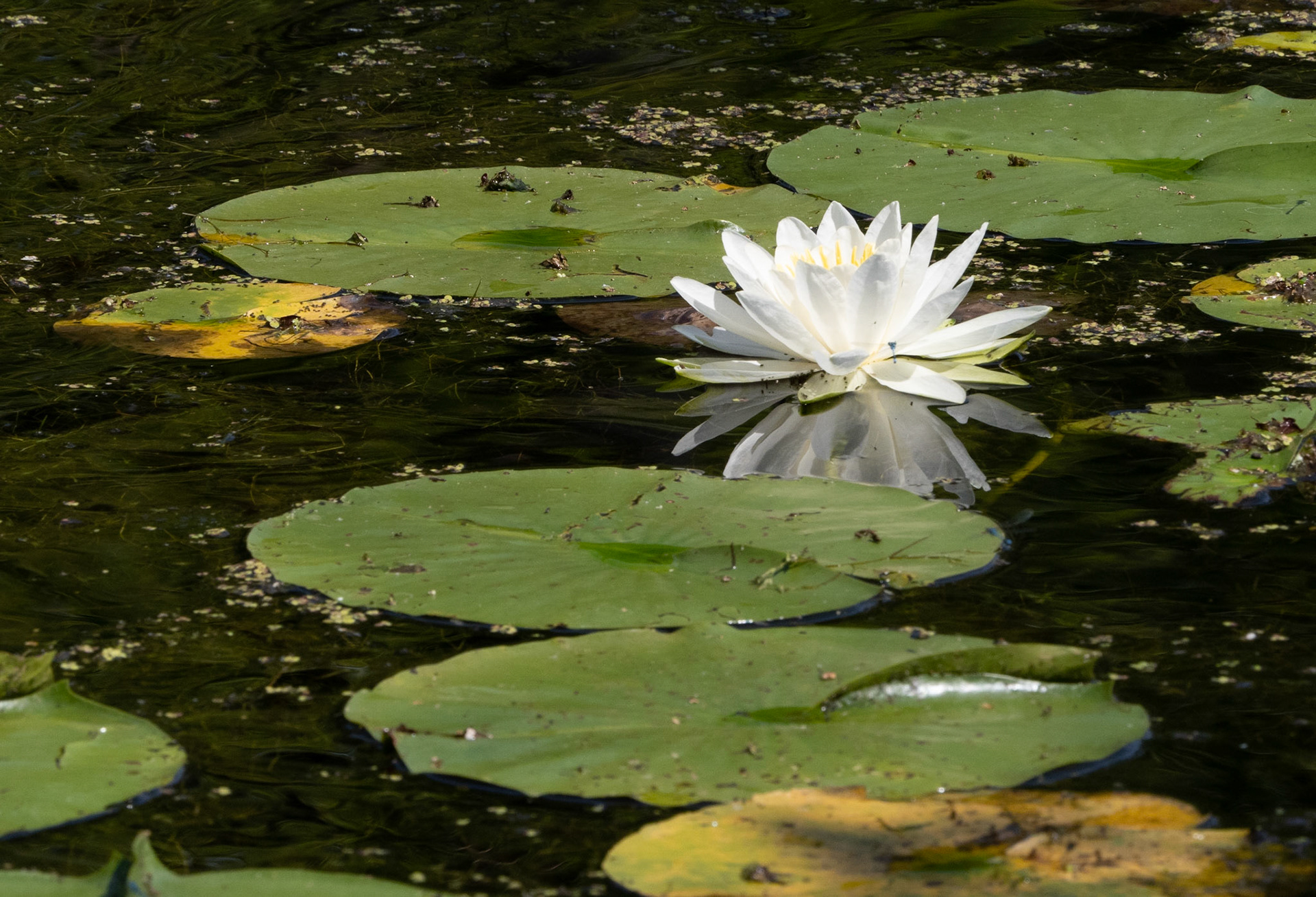
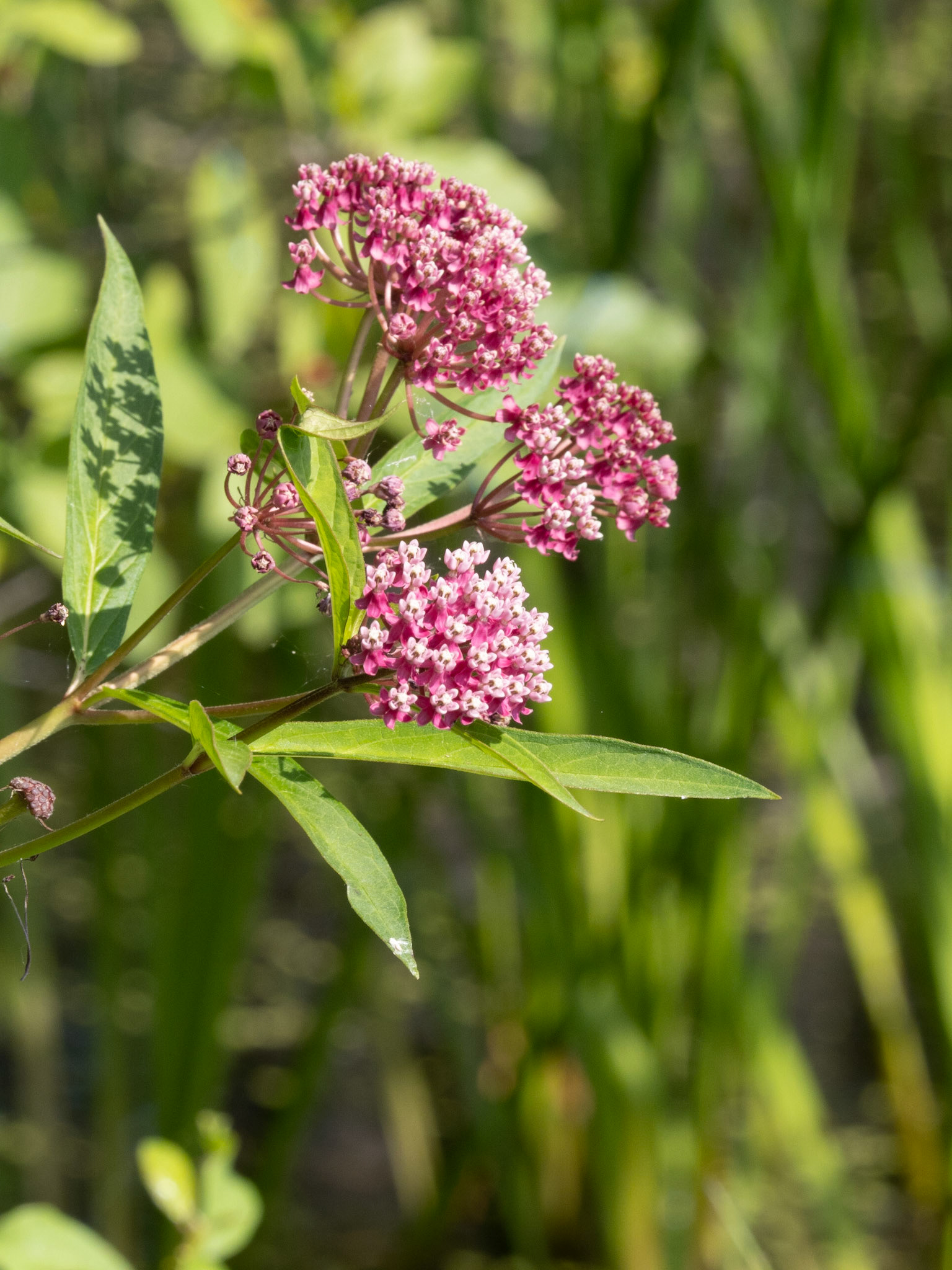

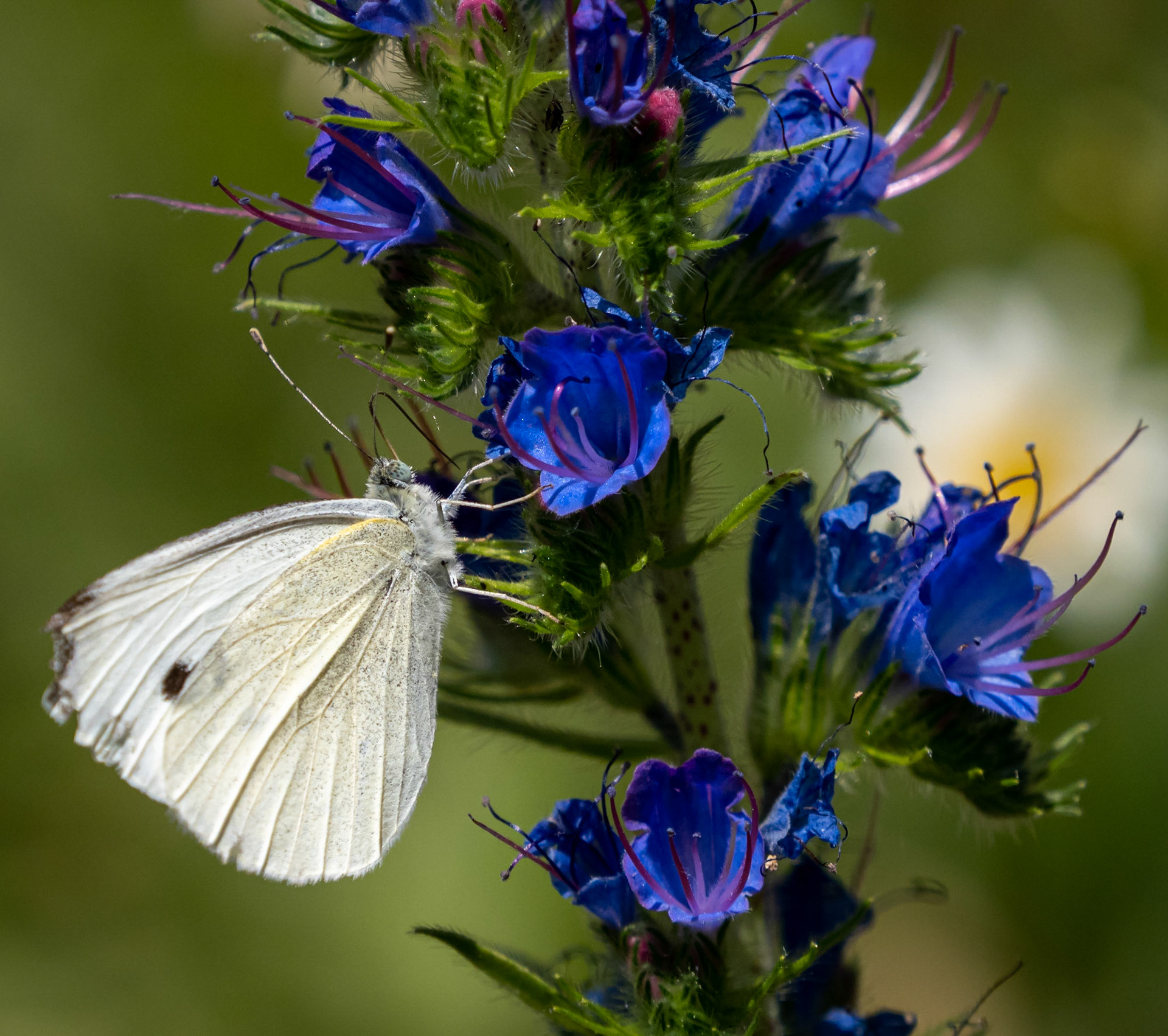
A newly fledged downy woodpecker was being fed, and watched over, by his parents.
Talking about feeding, one of the cotton tail rabbits was keeping an eye on me, I think he was hoping I might have brought along a carrot.
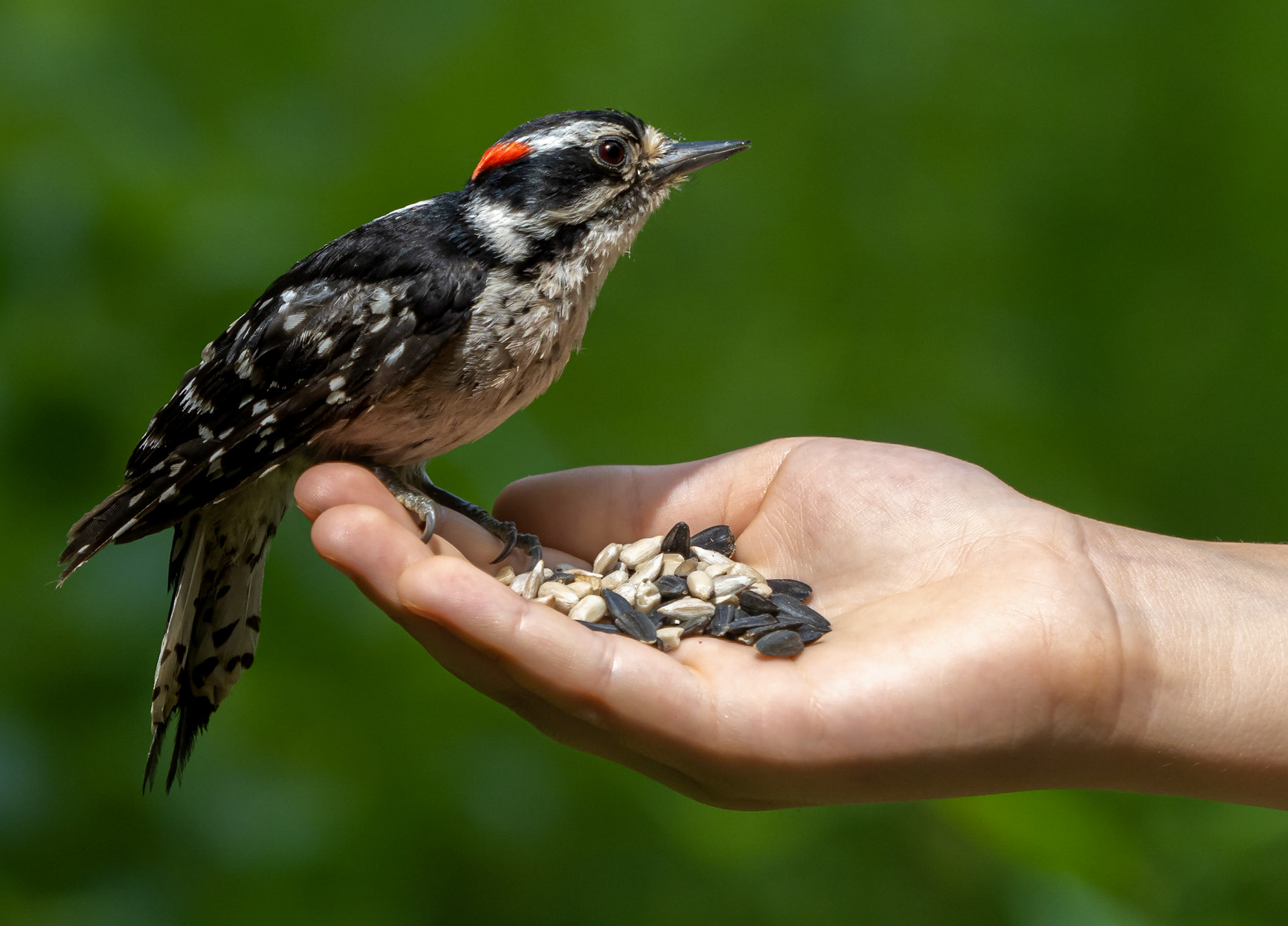
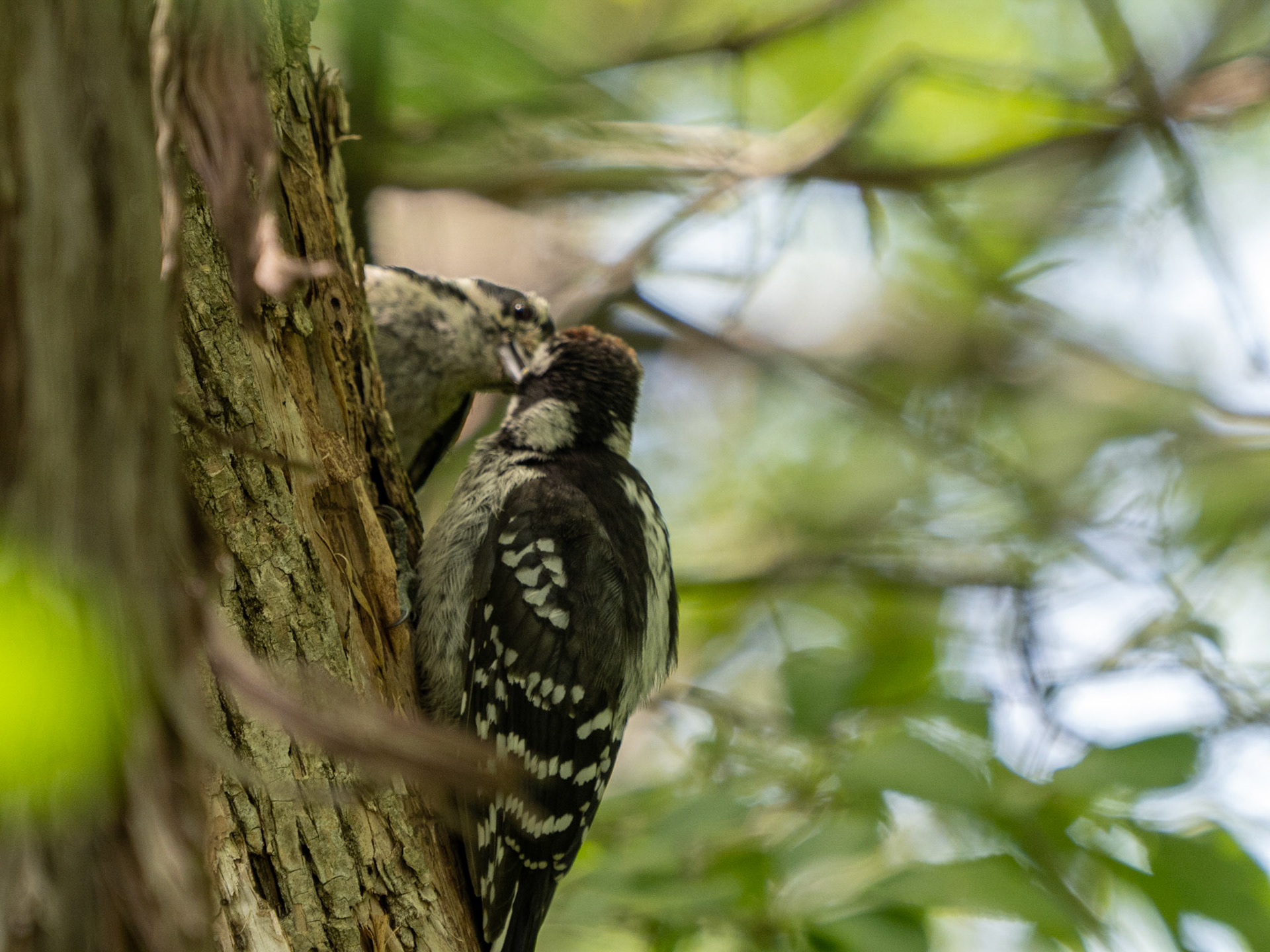



A few turkeys were around in the sunlight, causing a nice sheen from their back feathers.
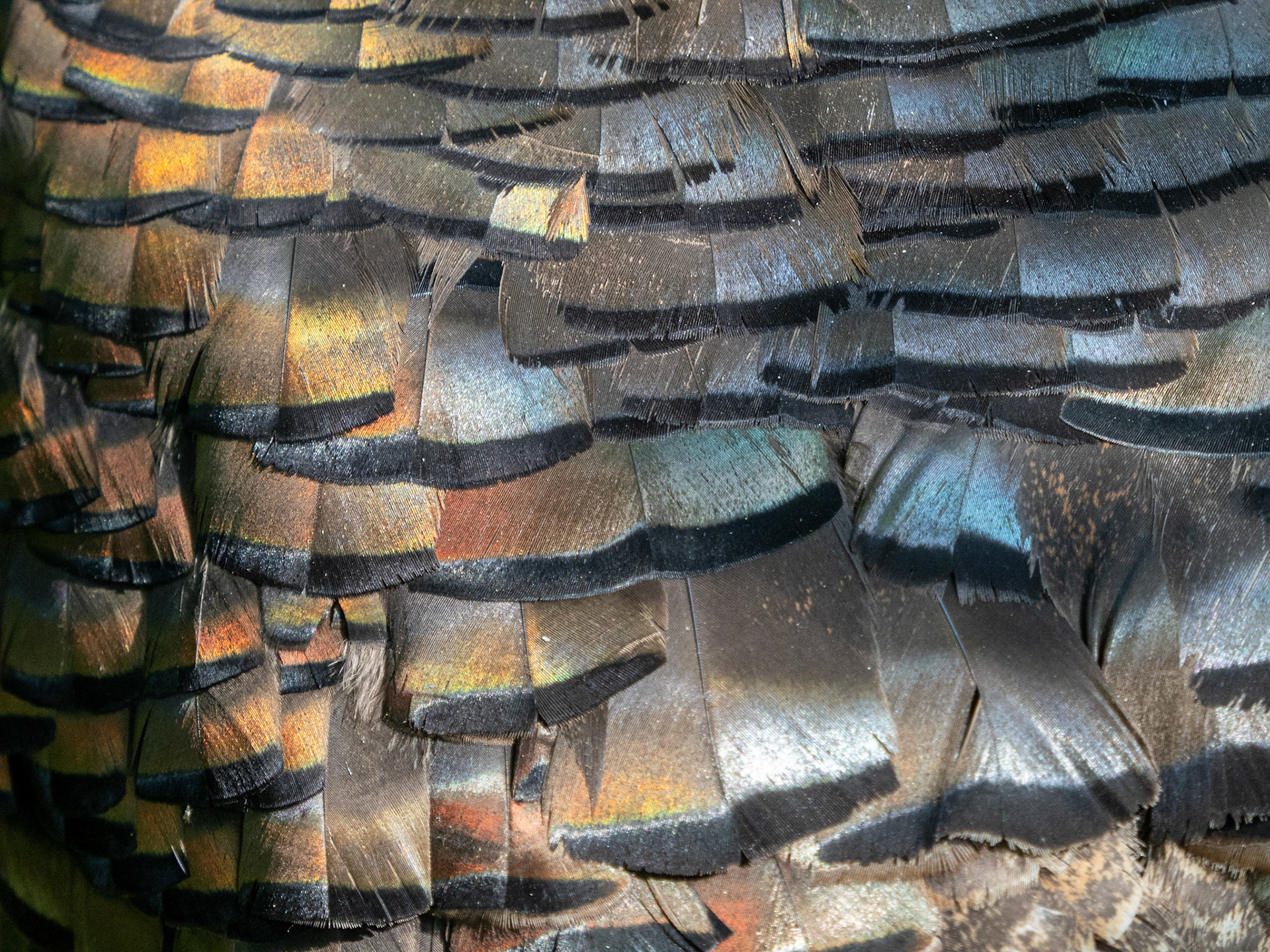
A seldom seen in summer rose breasted grosbeak appeared ever so briefly, while a cardinal and flicker stayed nearby a little longer. A nuthatch, in-between feeding from our hands, found a grub.


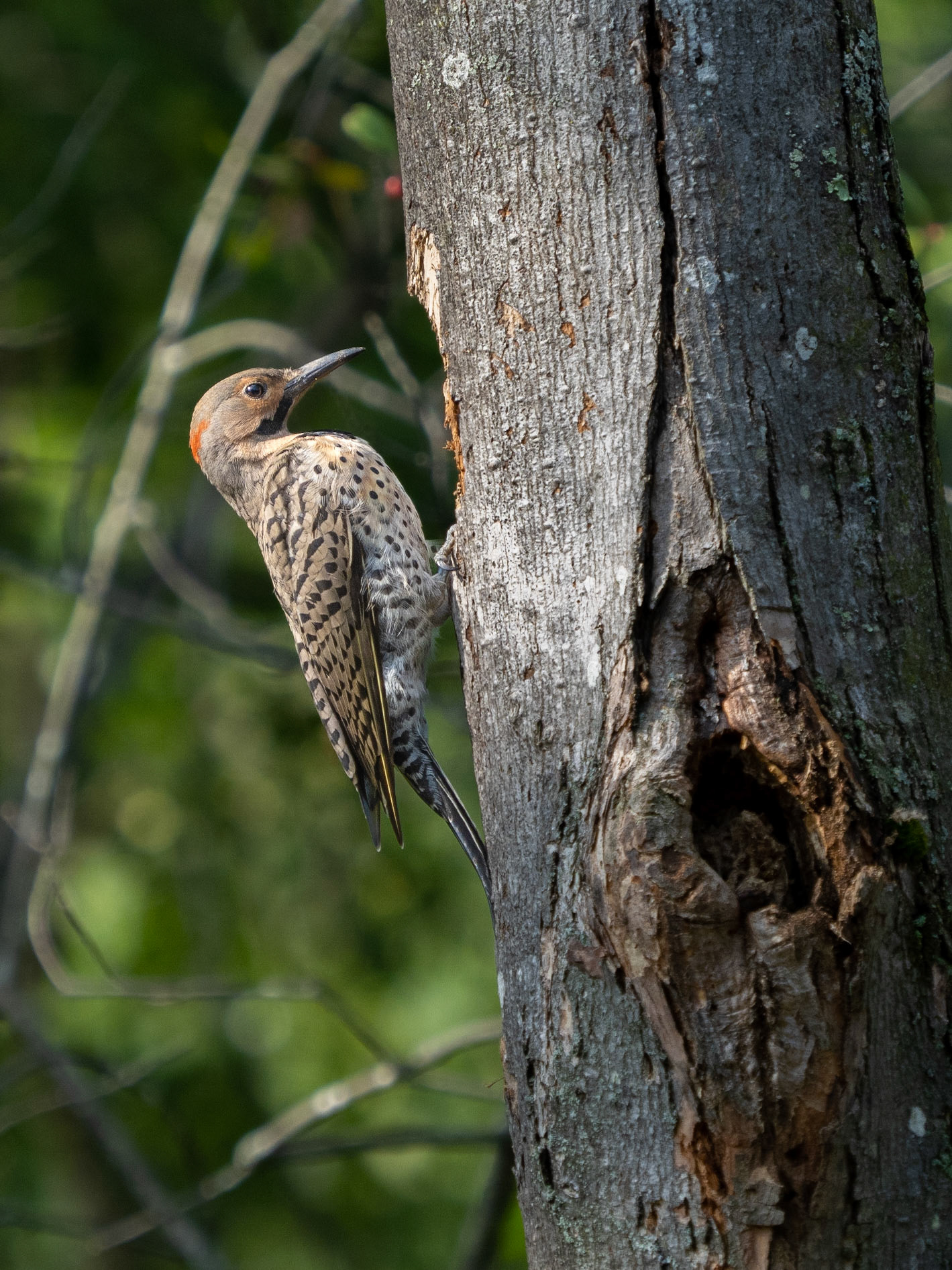
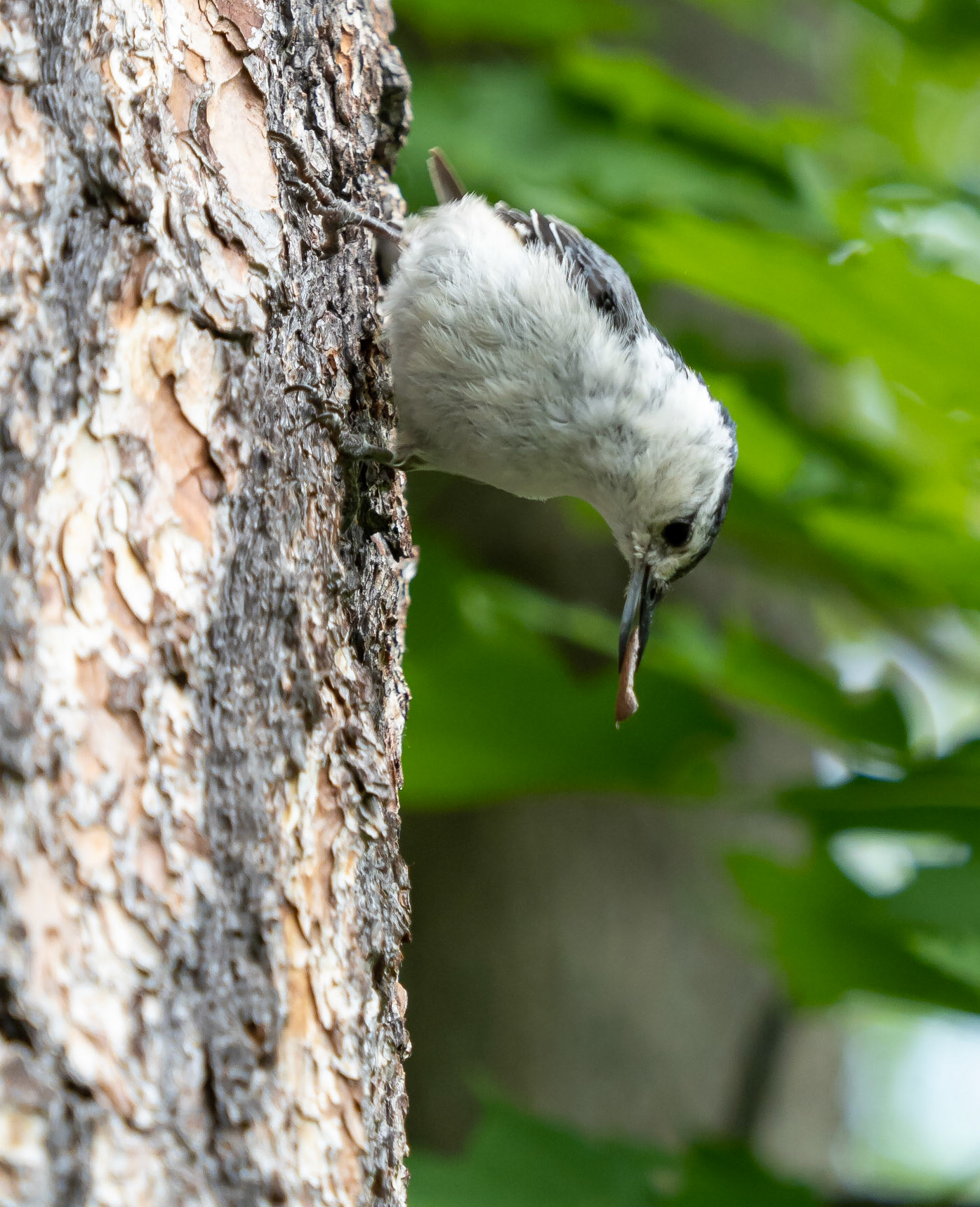
The waterlily plants are getting quite thick on the lake. The black-crowned night herons are light enough to stand on them, the muskrats have a tough time swimming through them.


